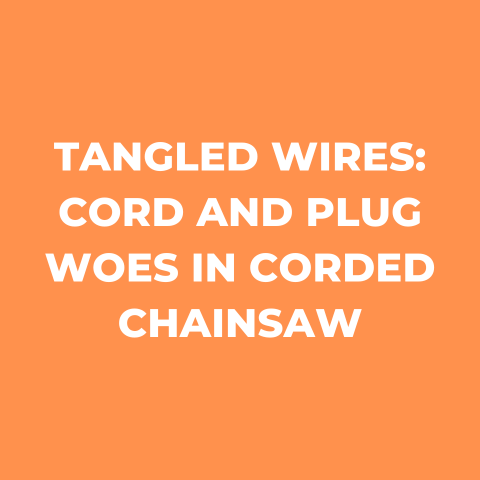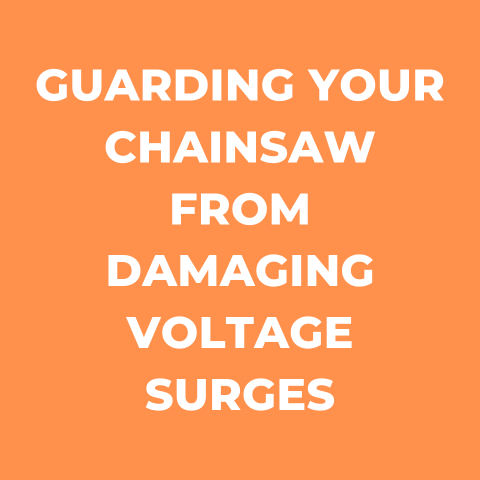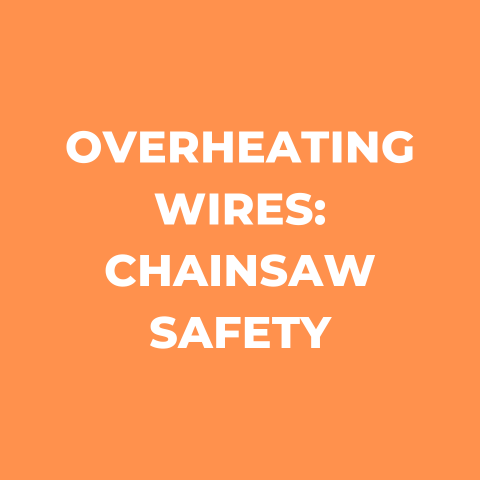Sparks Flying: Electric Chainsaw Fixes (Explained)
Operating a chainsaw can be dangerous business. But when your chainsaw starts sputtering, smoking, or throwing sparks, the real trouble begins. Electrical issues in chainsaws can lead to frustrating shutdowns, safety hazards, and costly repairs if left unchecked. In this troubleshooting guide, we’ll explore the most common electrical problems in electric and gas chainsaws, along with step-by-step solutions and preventative maintenance tips.
Why Electrical Issues Matter
While a sputtering chainsaw may seem like a minor nuisance, underlying electrical problems can quickly escalate if ignored. Faulty wiring and connections can lead to:
- Power loss or reduced cutting speed
- Overheating and fire hazards
- Shock or electrocution risk
- Permanent motor damage
By identifying issues early and making repairs promptly, you can avoid injuries, expensive component replacements, and prolonged downtime. Even if you’re not mechanically inclined, this guide will provide easy-to-follow steps anyone can execute. Let’s get started unraveling those electrical gremlins!
Step 1: Inspect Visible Wiring
Many electrical issues result from damaged cords or loose connections. Give your chainsaw a quick visual once-over before further troubleshooting:
- Check the power cord for cuts, exposed wiring, or missing insulation. Fraying can lead to short circuits.
- Look for loose or disconnected wires around the motor, starter assembly, or handle. Secure any loose connections.
- Inspect the extension cord if using one. Replace if damaged.
- Remove debris around wiring. Sawdust buildup can cause components to overheat.
- Confirm grounding prong on plug is intact. It’s essential for safety.
- Inspect outlets used for power. Faulty wiring can impact saw performance.
Quick fixes like securing connections or cleaning vents may solve minor electrical hiccups. But for ongoing issues, keep reading our step-by-step troubleshooting guide.
Step 2: Isolate the Issue
Here are the most common electrical problems in chainsaws:
Sputtering, Stalling, or Loss of Power
The saw starts but lacks power or dies under load. This points to an issue with:
- Dirty or failing carburetor
- Clogged air filter
- Defective spark plug
- Low compression
Difficult Starting
The saw won’t start or takes multiple pulls to start. Suspect problems with:
- Spark plug
- Carburetor
- Fuel delivery
- Starter motor or recoil assembly
Smoke or Fire
Seeing smoke or flames? Stop using the saw immediately. Potential causes include:
- Faulty wiring short circuit
- Blocked air vents leading to overheating
- Friction from damaged chain or bar
- Failing motor components
Shock or Electrocution Risk
Tingling or jolting sensation when using the chainsaw indicates:
- Damaged or poorly insulated wiring
- Defective switch or faulty ground connection
- Moisture penetration leading to short circuit
Now let’s explore solutions for each issue.
Finding Solutions: Stalling, Sputtering, Power Loss
Several issues can sap power from your chainsaw and cause stalling under load:
Blocked Air Filter
Sawdust can quickly clog the air filter, restricting airflow to the carburetor. This can reduce power over time.
Quick Fix: Remove air filter cover and clean filter with compressed air or gentle brushing. Replace filter if excessively dirty.
Carburetor Problems
The carburetor mixes air and fuel for combustion. Issues like gummed up components, stuck float needle, or improper adjustment can affect performance.
FixIt Steps:
- Remove air filter to access carburetor.
- Clean carburetor passages and jets with compressed air and carb cleaner.
- Inspect float needle and seat for wear or contamination.
- Confirm carburetor is adjusted according to manufacturer’s guidelines. Adjust idling speed if needed.
- Reassemble carburetor and air filter housing.
Note: Rebuilding the carburetor may be required if it’s excessively dirty or components are worn. Consider replacement if damage is extensive.
Spark Plug Trouble
The spark plug ignites the air-fuel mixture for combustion. Fouling, improper gap, or worn electrodes can cause misfires.
FixIt Steps:
- Disconnect spark plug wire and use spark plug socket to remove plug.
- Inspect for fouling, damage, or excessive electrode wear. Replace if needed.
- Check spark plug gap with feeler gauge. Adjust to 0.020-0.030 inches as needed.
- Reinstall plug and tighten properly (around 20-22 ft-lbs for most saws).
- Reattach wire and test saw.
Compression Issues
If the piston rings or cylinder wall are worn, the motor may lack sufficient compression for ignition. This requires professional repair.
FixIt Tips: Take saw to authorized repair shop for diagnosis. A compression test can confirm low pressure. Rebuilding the top end with new piston rings may be required.
Following correct troubleshooting steps helps narrow down stalling issues. Next we’ll cover solutions for chainsaws that won’t start.
Troubleshooting Chainsaw Starting Problems
A saw that won’t kick over or start on the first pull indicates deeper problems. But don’t yank the cord endlessly, as this can worsen issues. Try these tips instead:
Confirm Fuel Level
It’s obvious but often overlooked – verify adequate fresh fuel mix is present before anything else.
Quick Fix: Top off tank with proper ratio of gasoline and 2-cycle engine oil. Use manufacturer’s recommended fuel type and oil ratio.
Check Spark Plug
No spark means no ignition of fuel. The issue may be a fouled or damaged spark plug.
FixIt Steps:
- Remove plug and examine electrodes for fouling or excessive wear. Replace plug if needed.
- Check spark plug gap is correct (0.020-0.030 inches typically).
- Reinstall plug firmly and test for spark with spark tester tool. If no spark, likely an ignition module issue.
Verify Air Filter Condition
A fully blocked air filter prevents air flow to the carburetor. The saw may start briefly then die.
Quick Fix: Clean air filter immediately before troubleshooting, as covered earlier. Replace if unsalvageable.
Inspect Fuel Delivery Parts
Problems with the carburetor, fuel lines, or fuel filter can impact fuel delivery.
FixIt Steps:
- Confirm fuel line fittings are tight with no cracks. Replace deteriorated lines.
- Change fuel filter if present. A plugged filter can block fuel flow.
- Clean carburetor passages thoroughly or rebuild/replace as needed.
- Check carburetor adjustment and reset according to specs.
Check Starter Parts
If the motor won’t turn over, issues with the starter motor or recoil assembly could be preventing ignition.
FixIt Steps:
- Remove starter housing and inspect recoil spring, pulleys, and rope for damage. Replace broken parts.
- Check starter motor brushes and armature for wear or debris. Clean or replace as required.
- Lubricate recoil and starter components with light oil for ease of operation.
- Reassemble, test starter operation before refitting housing.
Isolating the specific area causing problems takes some diligence, but following a logical sequence of checks will uncover starting issues. Preventative maintenance is also key for avoiding problems, so read on.
Preventative Maintenance for Maximum Reliability
While even well-maintained chainsaws can experience electrical gremlins, following consistent preventative maintenance steps will provide the best defense against issues.
Regular Cleaning
Over time, engine parts attract sawdust, dirt, sap, and other gunk. Schedule seasonal deep cleaning for:
- Air filter – Use compressed air and replacement as needed.
- Carburetor – Clean jets, passages, needle valve with carb cleaner.
- Cylinder fins & muffler – Remove buildup with brush and compressor.
- Spark arrestor screen – Replace if clogged.
- Fuel/oil tank – Rinse with fresh gas to dissolve resin deposits.
Proper Storage
Improper off-season storage can lead to rusted, sticky components.
- Drain the fuel and run saw dry before storage to prevent gumming. Use fuel stabilizer if storing over 1 month.
- Disconnect spark plug wire and remove plug. Add teaspoon of oil through spark plug hole. Pull cord slowly to distribute oil and prevent cylinder rust.
- Wipe bar oil off bar/chain to inhibit rusting.
- Clean saw body, chain, and bar of all sawdust, sap and dirt deposits before storing.
- Store saw in clean, dry location away from






